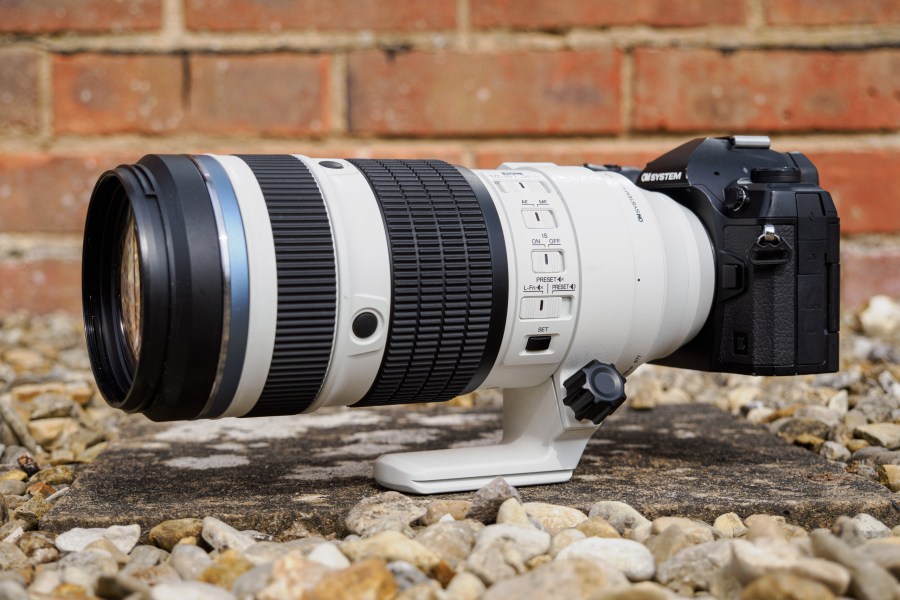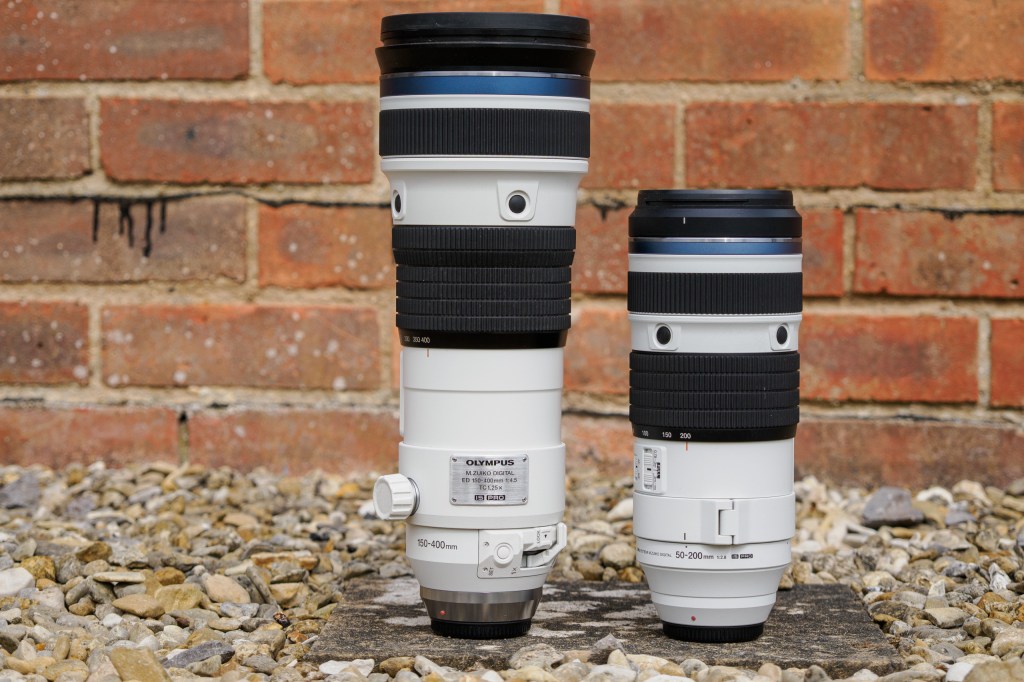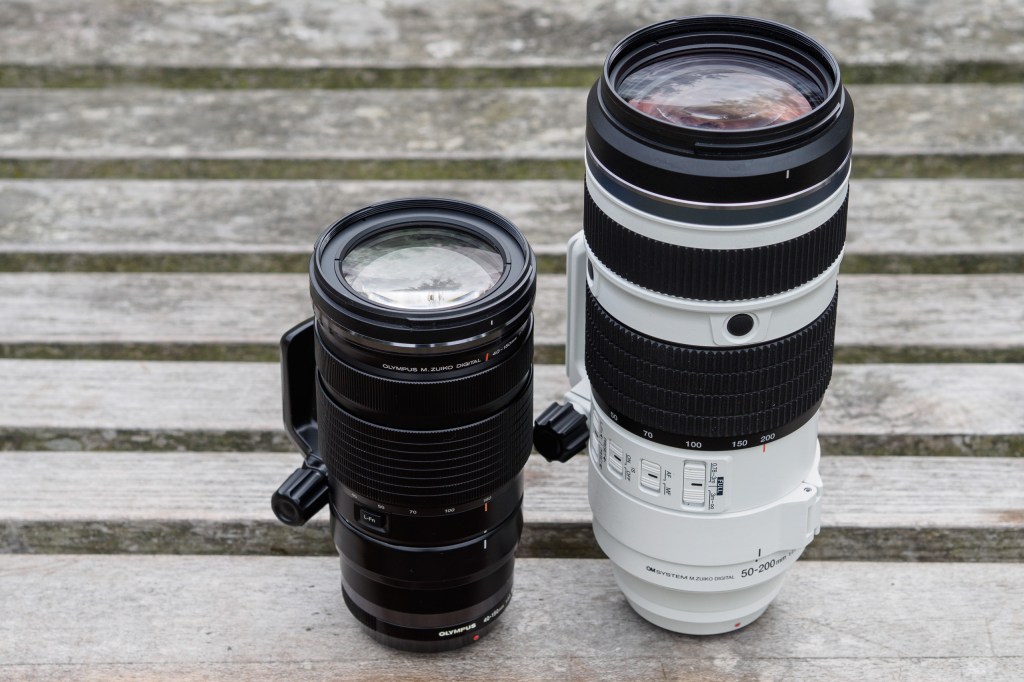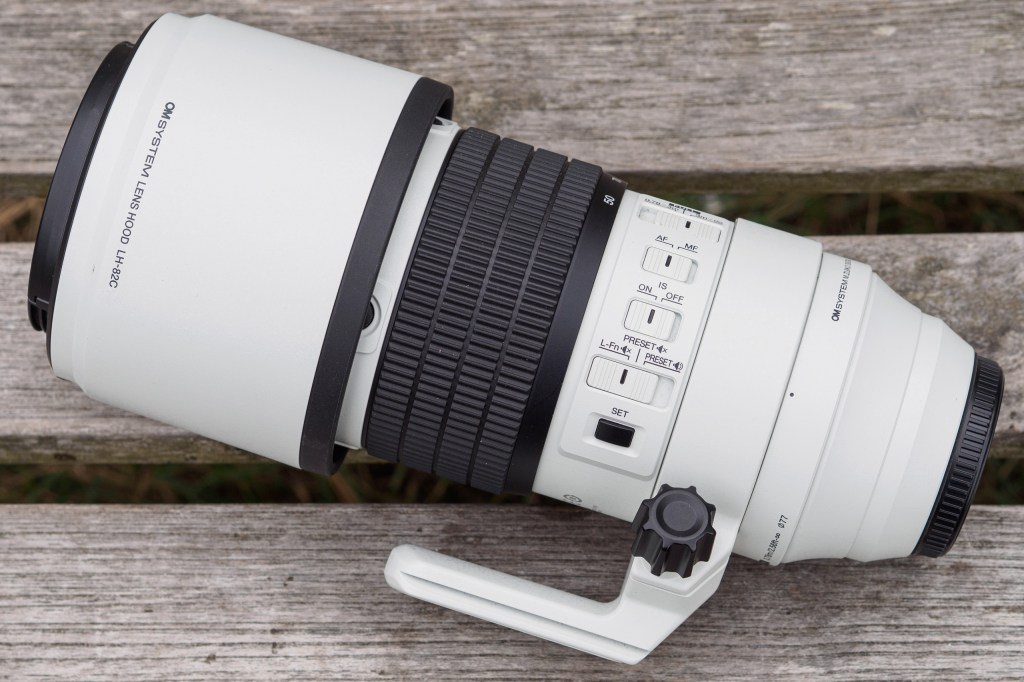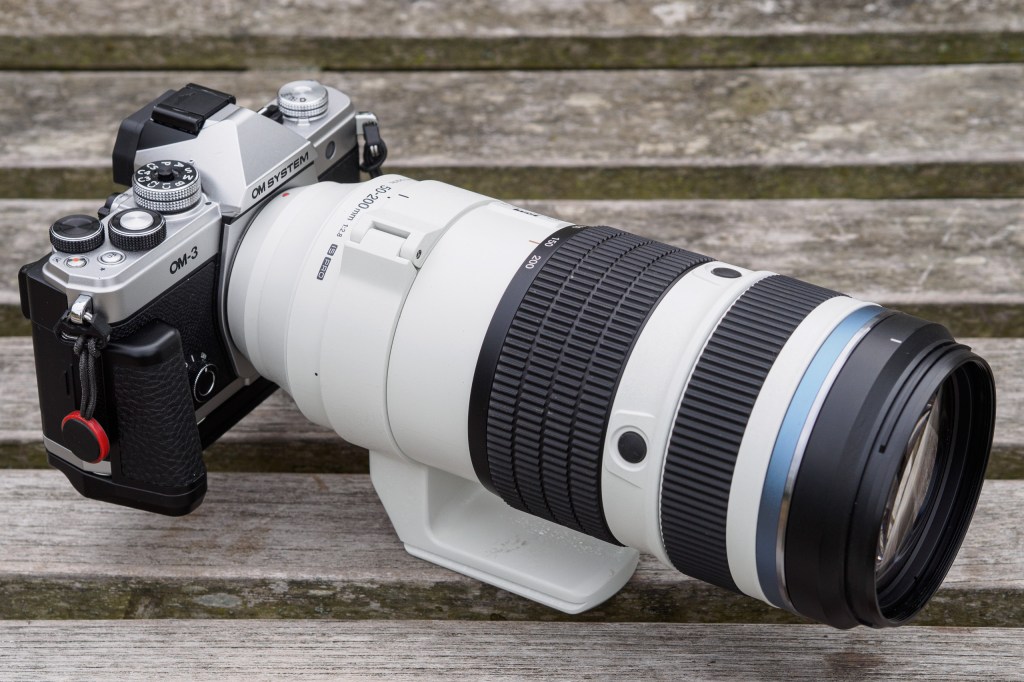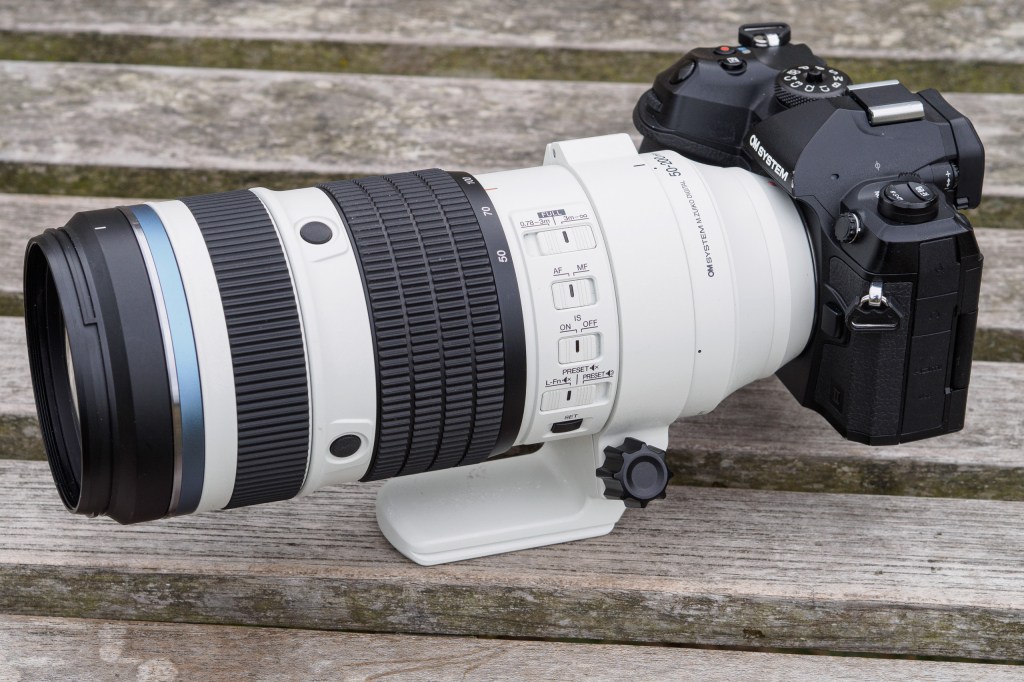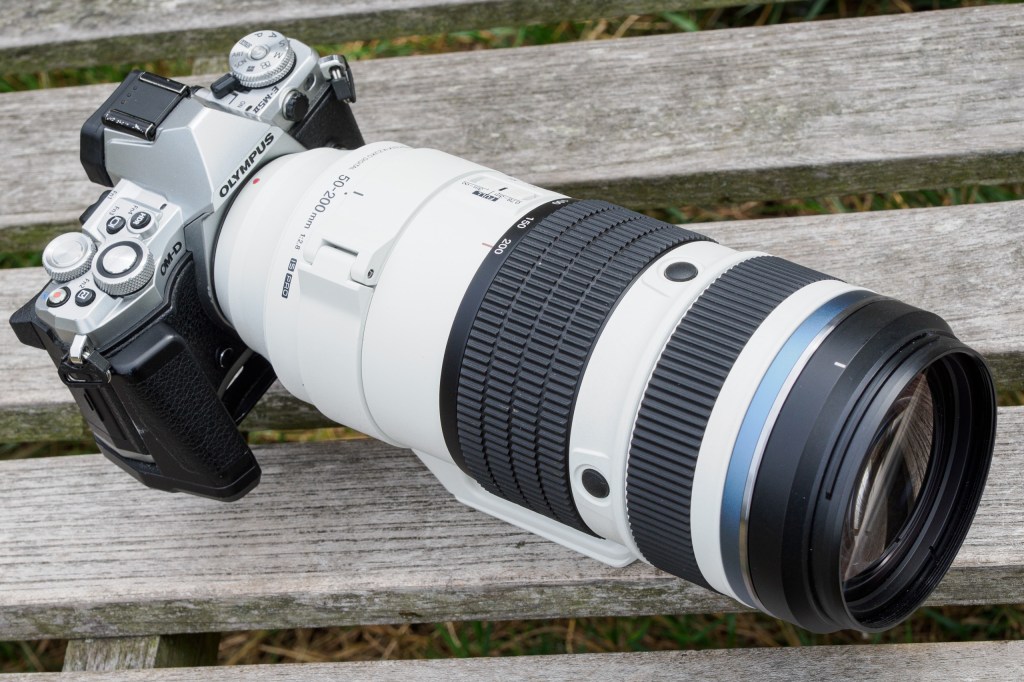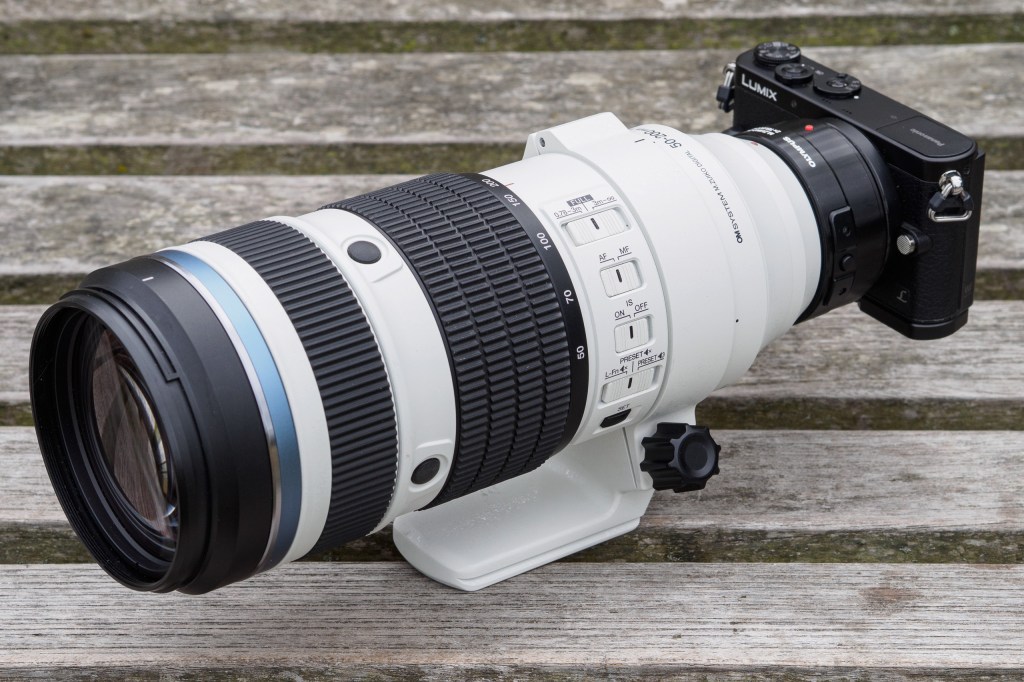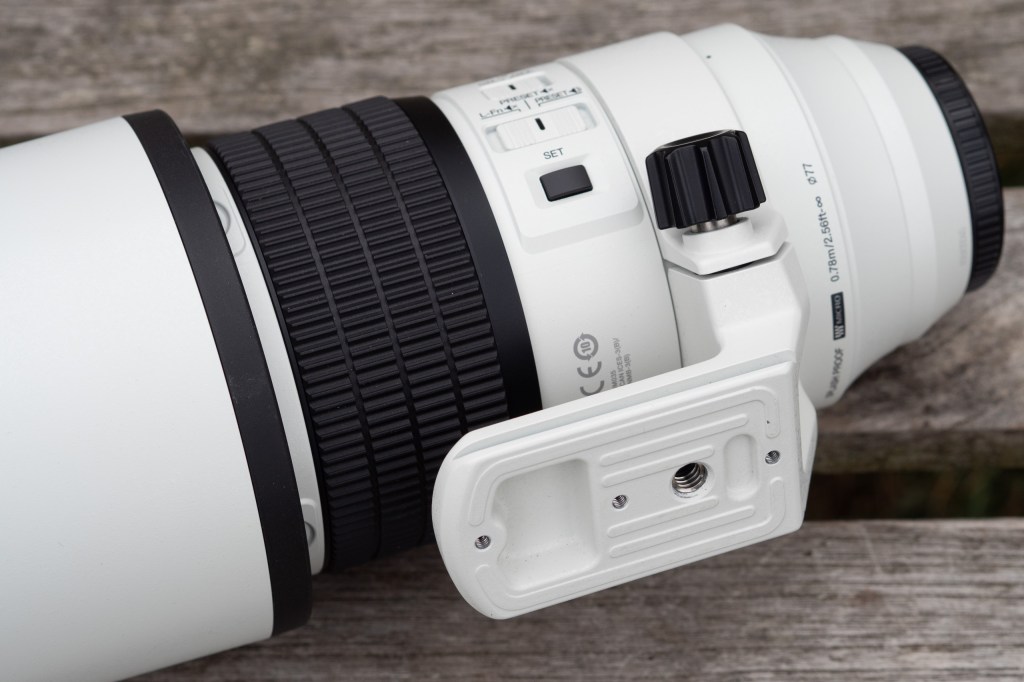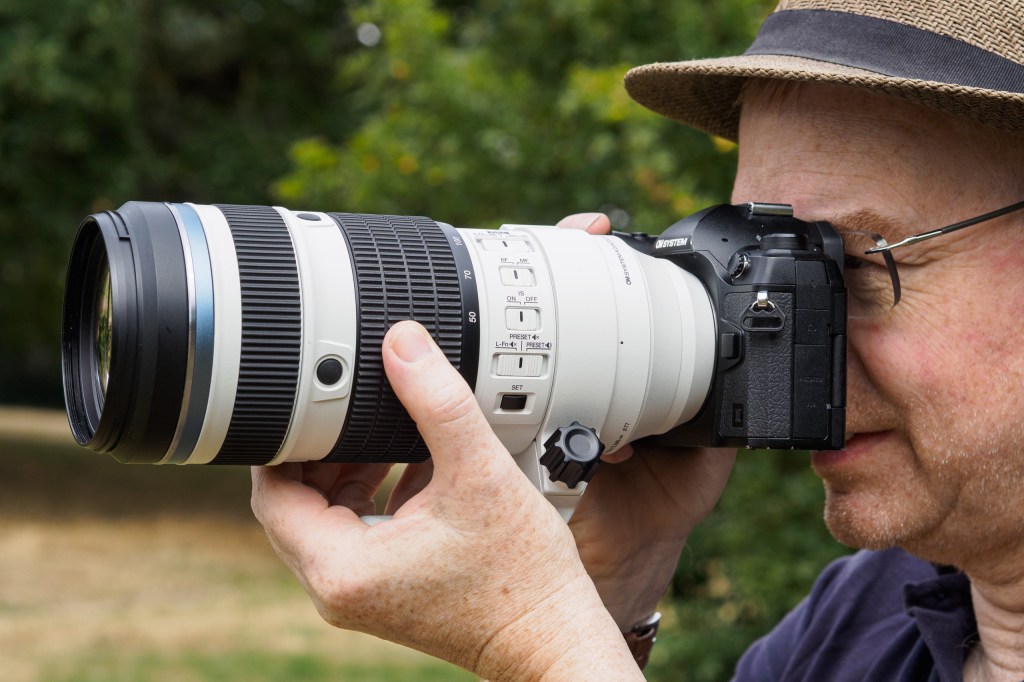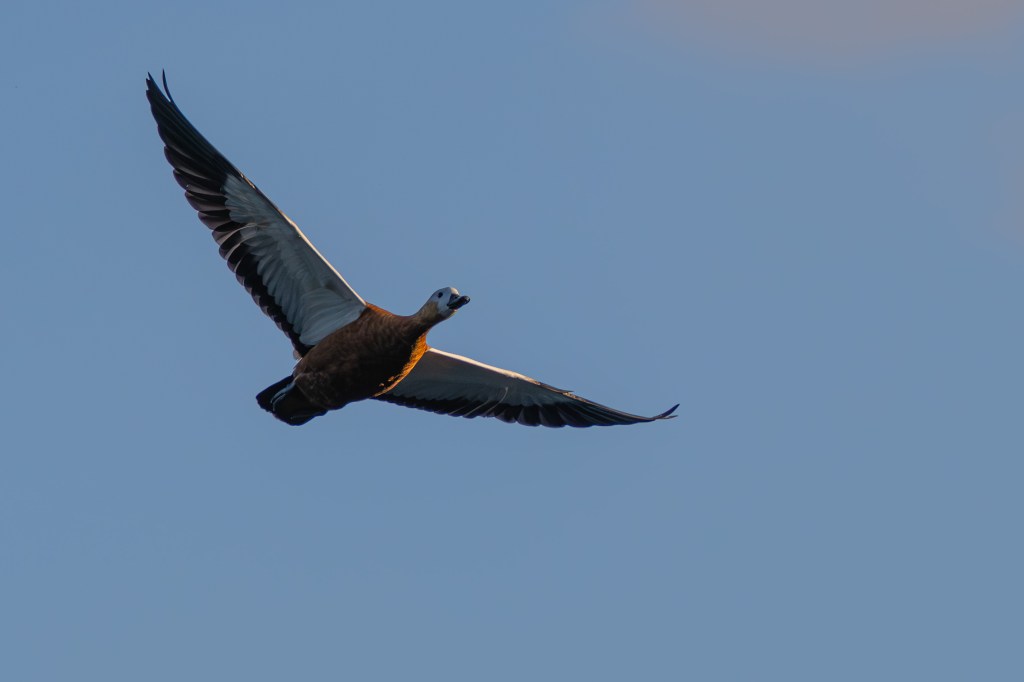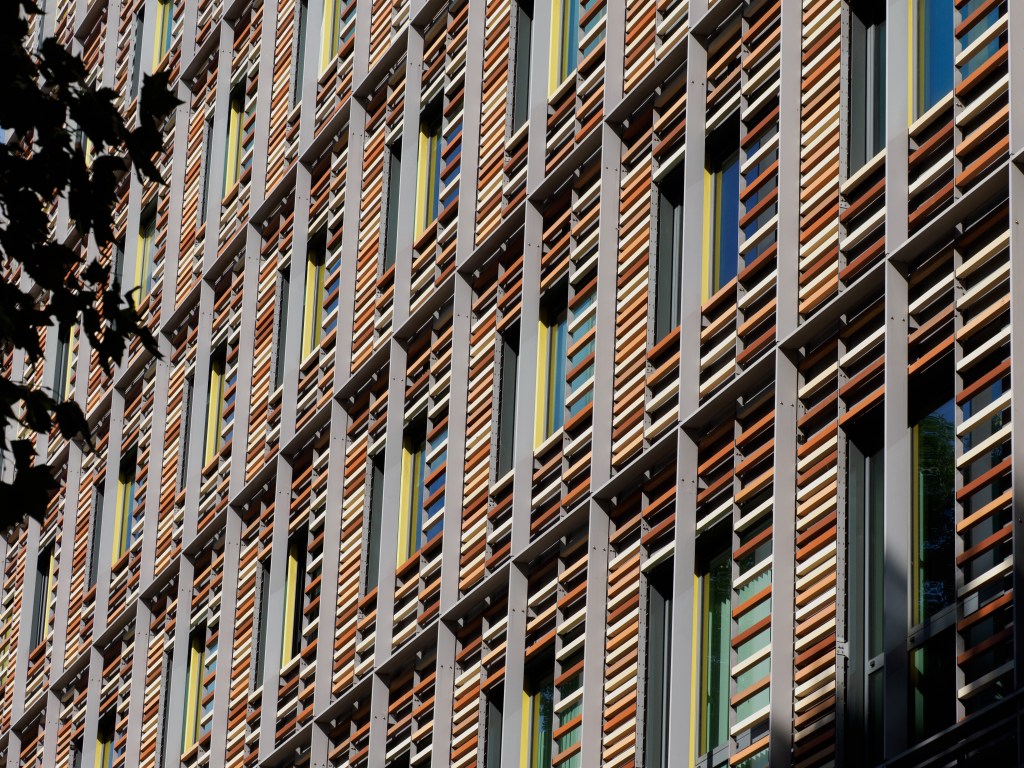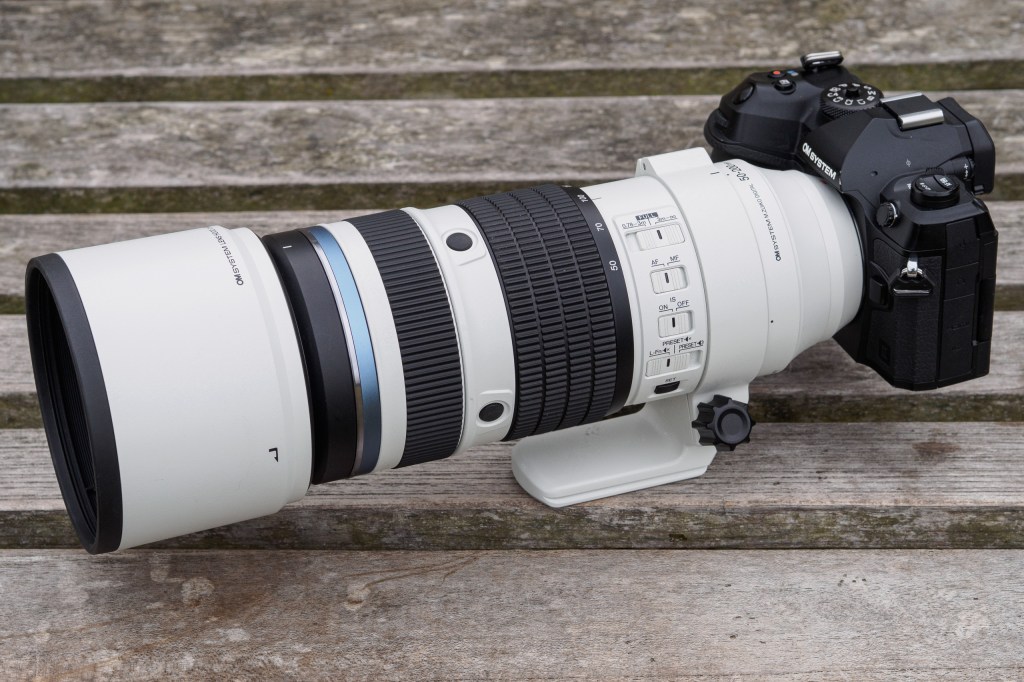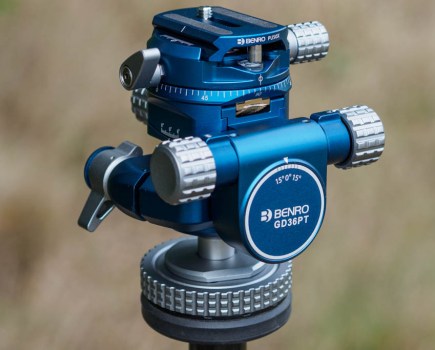Amateur Photographer verdict
The OM System 50-200mm F2.8 is a superb telezoom for Micro Four Thirds. It boasts excellent build and handling, quick autofocus, effective stabilisation and superb image quality. But it’s not cheap.- Superb image quality
- Robust build and Pro-level handling
- Effective optical stabilisation
- Compatible with teleconverters
- Relatively large for MFT
- Pricey
The OM System M.Zuiko Digital ED 50-200mm F2.8 IS Pro is a telephoto zoom for Micro Four Thirds cameras, with a constant f/2.8 maximum aperture and a 100-400mm equivalent range. It’s not a replacement for the much-loved M.Zuiko Digital ED 40-150mm F2.8 Pro from 2014, though, which is still one the firm’s best-selling lenses. Instead, it’s a higher-end upgrade, with increased zoom range and built-in optical stabilisation. As a result, it’s one of the very best Micro Four Thirds lenses you can buy.
OM System M.Zuiko Digital ED 50-200mm F2.8 IS Pro at a glance:
- $3699 / £2999
- 100-400mm equivalent range
- 7-stop image stabilisation
- 0.5x equivalent magnification
- IP53 weathersealing
- 225.8mm long, 1250g
- Micro Four Thirds mount
With its long telephoto reach, the OM System 50-200mm F2.8 is designed for such things as wildlife, sports, and action photography. Thanks to impressive close focusing, it’s also capable of semi-macro shots of small subjects such as insects. While it’s primarily built for use on the firm’s flagship OM-1-series cameras, the lens can also be used on other OM System, Olympus or Panasonic G-system models.
At £2999, the 50-200mm costs well over twice as much as the 40-150mm f/2.8. This makes it the second most-expensive Micro Four Thirds lens after the firm’s 150-400mm F4.5 TC 1.25x IS Pro, with which it has a lot in common, including a striking white finish.
However, one factor that might help justify the lens’s cost is its compatibility with teleconverters. Fit a 2x converter, and you get a 100-400mm F5.6, which means that for some users, it could replace both the 40-150mm and 100-400mm zooms. Assuming, of course, its performance is up to scratch – so let’s find out.
Features
Unlike most of OM System’s other lens releases over the past couple of years, the 50-200mm isn’t an update or rework based on an existing optical formula. Instead, it’s the firm’s first all-new, in-house design since the ground-breaking 90mm F3.5 Macro IS Pro. And it’s similarly ambitious in offering a feature set you might struggle to find in other systems.
Optically, the lens employs 21 elements in 13 groups, with OM System promising excellent resolution across the entire zoom range. To this end, the firm has employed plenty of exotic glass, with 2 elements made from high refractive-index (HR) glass, 3 from E-HR glass, 1 from extra low dispersion (ED) glass, and two from super-ED glass, plus one aspherical ED element. Zero-II extra-low reflection coating is applied to minimise flare and ghosting.
With OM System placing a great deal of emphasis on outdoor use, the lens boasts weather sealing to the IP53 standard. It should also work in temperatures down to -10°C. Both zooming and focusing are internal, so the length and balance always remain constant.
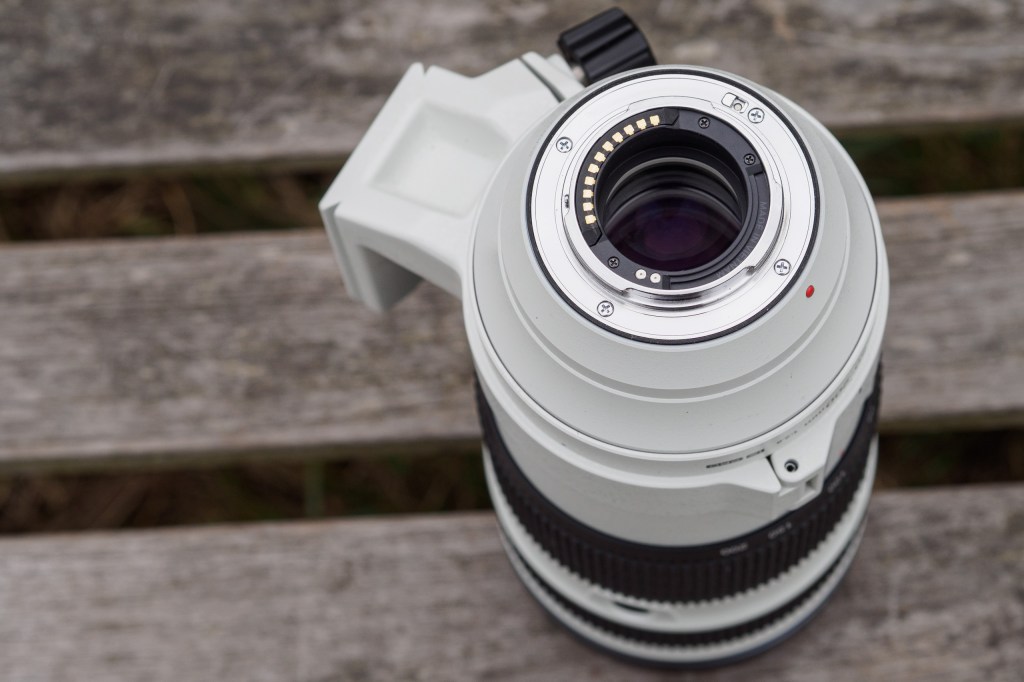
In a step up compared to the 40-150mm f/2.8, optical stabilisation is built-in, which works together with the in-body stabilisation in many OM System and Olympus bodies. This provides up to 7 stops of shake reduction when shooting at 200mm on the OM-1 II, or 5 stops on the entry-level E-M10 IV, according to CIPA standard tests.
The minimum focus is just 78cm across the entire zoom range, which equates to 0.5x equivalent magnification at 200mm. Fit the MC-20 teleconverter and you can fill the frame with a subject measuring 34.6 x 26mm – similar to a life-size macro on full-frame.
One welcome new feature, at least for OM, is the ability to register a specific focus distance, and then recall it using any of the four L-Fn buttons. That could be useful for shifting focus rapidly to a particular point, such as a bird’s favourite perch, for example.
Like the 40-150mm, the lens comes with a tripod mount ring. But this one is much improved, with a split, hinged design that allows it to be removed without taking the lens off the camera. The foot also has an Arca-Swiss dovetail profile which allows it to be mounted directly onto many tripods and monopods.
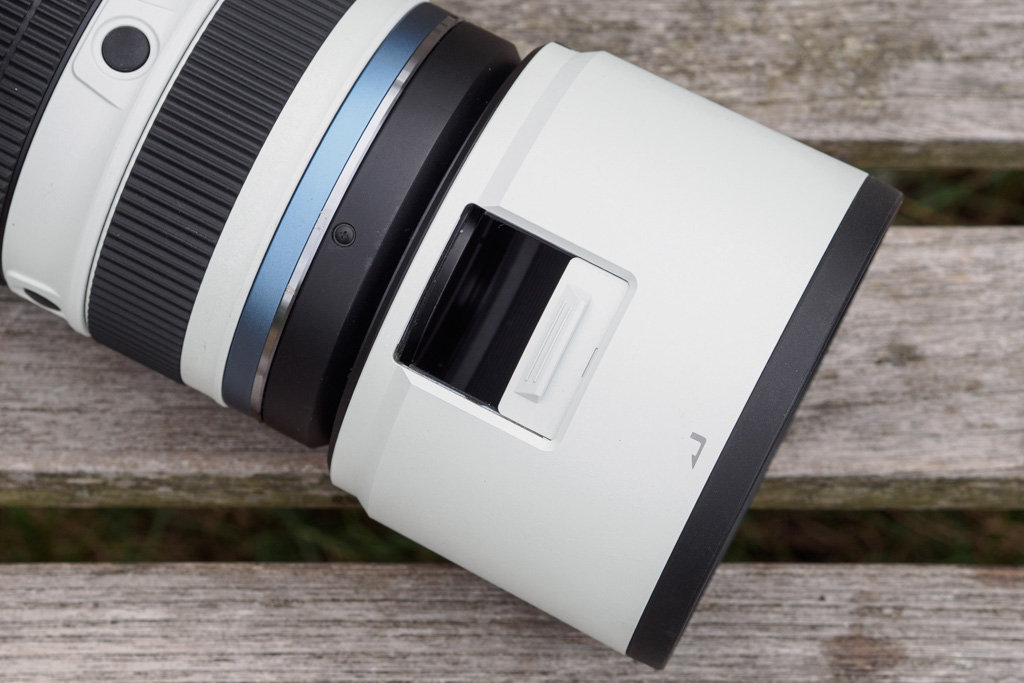
A 7cm-deep cylindrical lens hood is supplied, with a locking button to prevent it from falling off accidentally. It has a sliding door to allow easy adjustment of polarising filters, which fit via a 77mm thread. The hood reverses snugly for storage, and without blocking the zoom ring, which is welcome when you want to get a quick grab shot.
Build and handling
When it comes to design and build, the OM System 50-200mm F2.8 IS Pro has much more in common with the 150-400mm F4.5 1.25x TC than it does with the 40-150mm F2.8 Pro. This means that it feels more like a high-end professional telephoto zoom, with an extremely robust-feeling metal barrel and an array of additional controls.
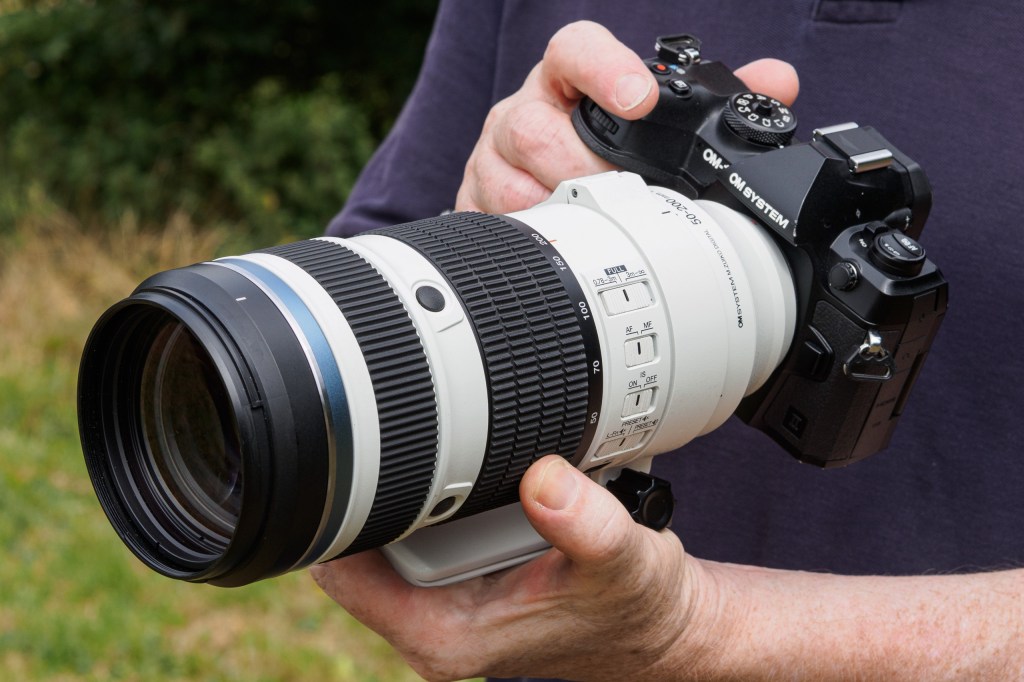
It’s significantly larger too, measuring 91.4mm in diameter and 225.8mm in length, while weighing 1075g on its own, or 1250g with the tripod ring attached. That means it’s broadly similar in size to a full-frame 70-200mm f/2.8 or 100-400mm zoom, which shouldn’t come as much surprise. But it’s by no means a burden to carry, and easy to use hand-held.
Given the size, I found that the lens feels most at home on OM-1 and E-M1-series cameras, which have nice deep handgrips. It should also work well on the Panasonic Lumix GH7 or G9 II. But there’s nothing to stop you using it on other bodies, and I also tried it with the OM System OM-3, and the much smaller (and older) Olympus OM-D E-M5 Mark II. This works just fine – you simply support the combination by the lens – but it’s made much more comfortable with an add-on handgrip.
The broad zoom ring is perfectly placed in the centre of the barrel, and requires a twist of a little less than 90° to go from one end to the other. Thanks to the internal zoom design, it’s notably quick to zoom back and forth, and requires minimal force.
Towards the front, you’ll find a smoothly rotating manual focus ring. Unlike the 40-150mm, though, this doesn’t have a push-pull clutch to engage manual mode. Instead, there’s a conventional AF/MF switch on the side of the barrel.
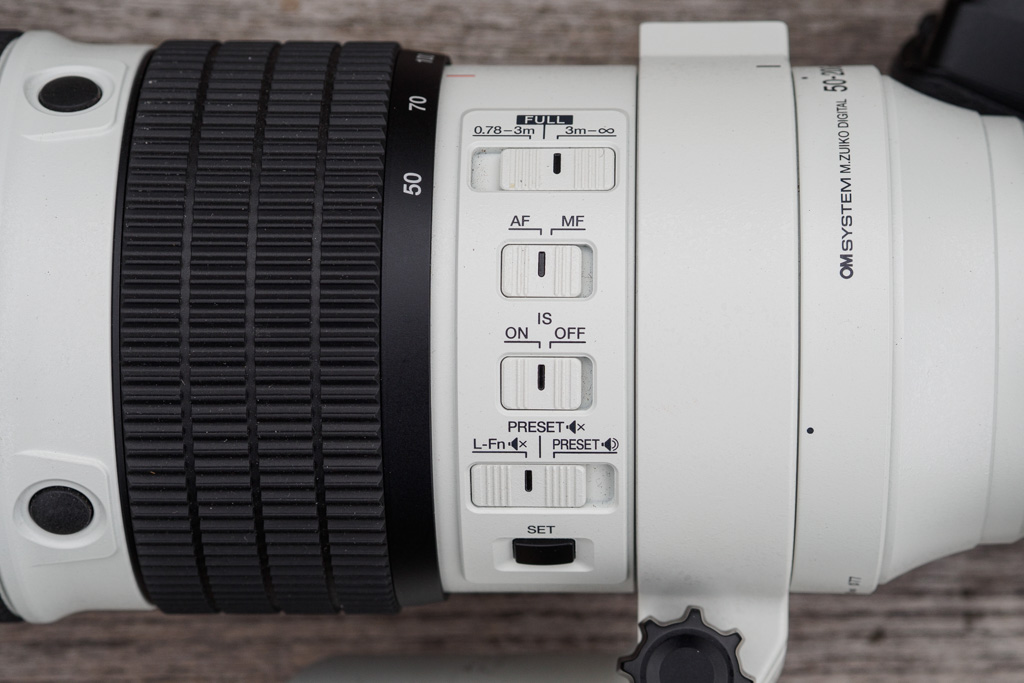
Above the focus switch, you’ll find a distance limiter that offers three range settings: 0.78m – 3m, 3m – infinity, and Full. This should help minimise hunting when you know you’ll be shooting either distant or close-up subjects. Below it is an IS On/Off switch, however there’s no IS mode control, as this is set from the camera body. Here you can switch off stabilisation in one direction when you’re panning the camera to follow moving subjects, or let the camera detect this automatically.
At the bottom of this control cluster are a switch and a button for the new preset focus distance function. This works in concert with the four L-Fn buttons, which are arranged at 90° intervals around the barrel, in between the zoom and focus rings. Using the switch, you can set these either to work as usual, or to recall the preset distance, with or without a confirmatory beep. Setting the distance is easy: simply focus on the required point and press the ‘Set’ button.
Overall, everything works well without any fuss. The L-Fn buttons fall perfectly under your left thumb, regardless of whether you’re shooting horizontal or vertical images. The various switches are large and easy to operate too, while being inlaid into a panel so you shouldn’t nudge them accidentally.
Autofocus
I’ve been impressed by the autofocus performance of the OM System 50-200mm F2.8 Pro. It’s fast, essentially silent, and consistently accurate. When shooting birds in flight, which are always a demanding test of continuous autofocus, in my hands the lens locked on quickly and kept track of their movements pretty reliably. I tested the lens on the OM-1 Mark II, and felt the lens did everything the camera asked of it.

Click on any sample image to see the full-resolution file
You will, however, need an E-M1, OM-1 or OM-5 series body (or a Panasonic GH7 or G9 II) equipped with phase detection autofocus to get this sort of performance with moving subjects. With older or cheaper cameras that employ contrast detection, the lens will be limited by the body’s ability to keep up with any sort of motion.

Focus breathing is well controlled at all focal lengths. However, the lens isn’t parfocal, which means that the focus distance drifts when you zoom in or out. For videographers filming wildlife, that means you’ll need to use C-AF to hold the subject in focus if you wish to zoom while recording.
Performance
I tested the OM System 50-200mm F2.8 on the firm’s flagship camera, the OM-1 Mark II. While I spent a lot of time photographing wildlife, to reflect its likely real-world use, I also made a point of shooting highly detailed architecture, to examine sharpness and detail rendition across the frame. Suffice to say, the lens didn’t disappoint me in any way.

Optically, this really is a stunning lens. It’s impressively sharp right across the frame, pretty much regardless of focal length or aperture. Detail rendition remains excellent at close distances for tele-macro shots, too. There are no problematic aberrations, and even when examining images close-up onscreen, I only ever saw the merest hint of any colour fringing along high-contrast edges.

The only caveat is the usual one with Micro Four Thirds, in that apertures smaller than f/8 will look increasingly soft due to diffraction. While this might sometimes be an acceptable trade-off for increased depth of field, I’d avoid going any smaller than f/11. This isn’t a fault with the lens, it’s just optical physics in action.
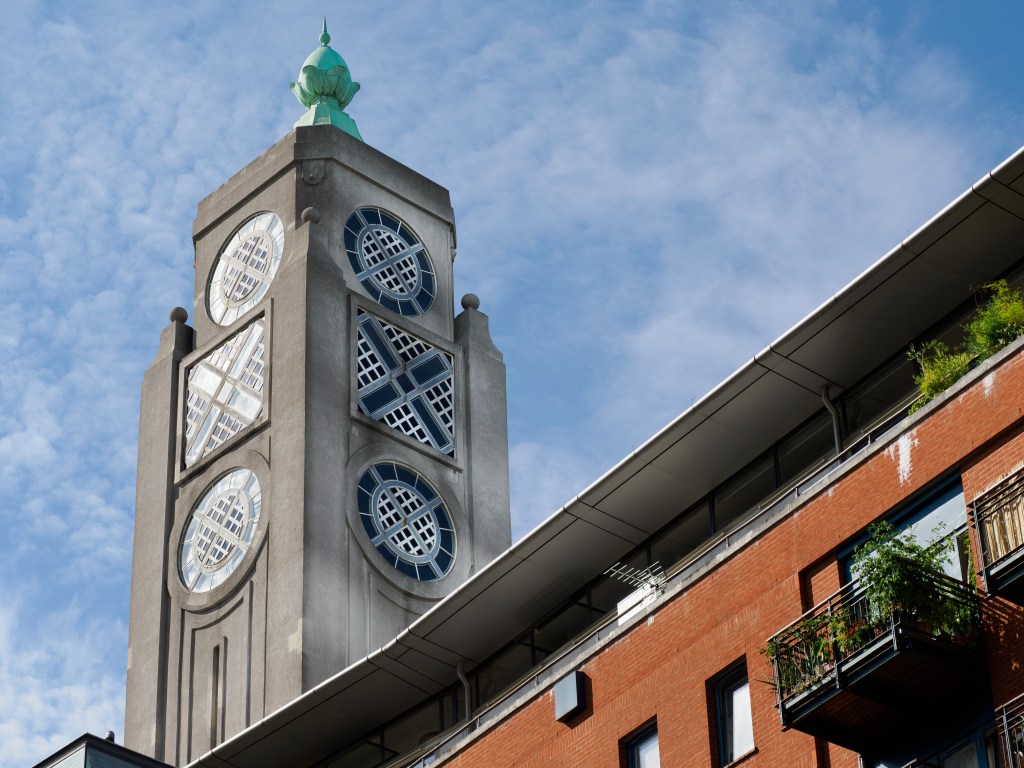
The lens’s impressive sharpness turns out to be really important when photographing erratically moving subjects, such as birds in flight, which with the best will in world, are unlikely to end up perfectly centred in your frame. It means that you can crop from pretty much anywhere, and still get sharp images.

It also ensures that there’s high-quality data for denoising algorithms to work with when you’re forced to shoot at high ISO settings, either to freeze subject motion, or in low light.

Equally important as the lens’s sharpness, is its treatment of out-of-focus regions of the image. They’re rendered smoothly and attractively, so they never distract from the subject. Again, this is equally true when shooting close-ups, as when capturing birds in flight against a background of distant foliage.
Use with teleconverters
As previously mentioned, the lens is compatible with OM System / Olympus teleconverters. With the MC-14, it becomes a 70-280mm F4 zoom (140-560mm equivalent), and with the MC-20, it’s a 100-400mm F5.6 (200-800mm equivalent). Note, though, that you can’t use Panasonic G-system teleconverters.
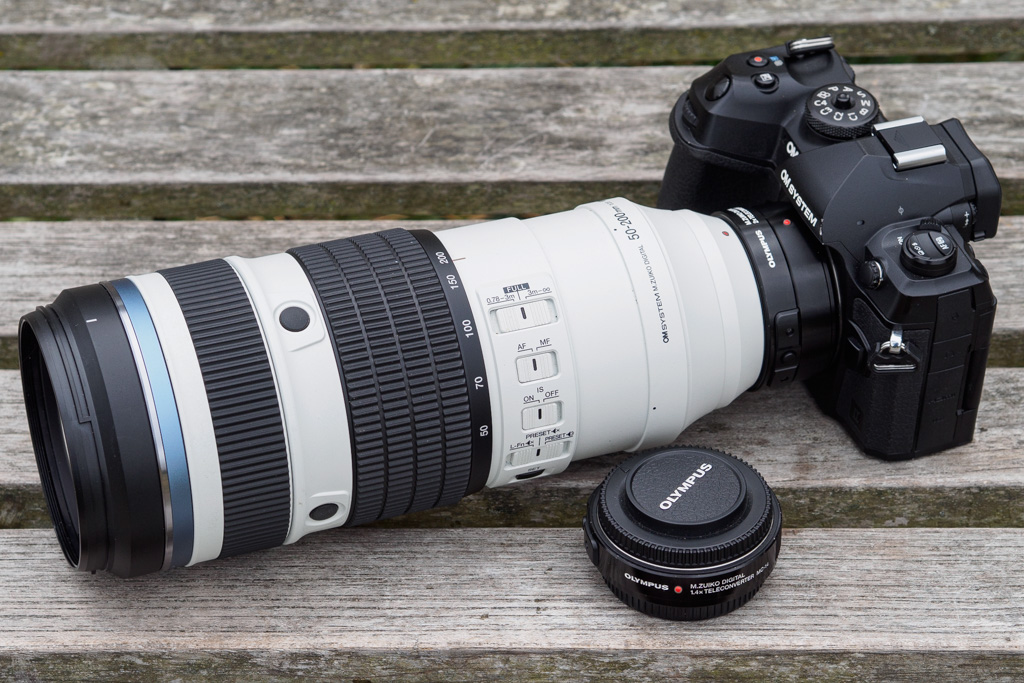
I was able to test the lens with both converters, and I was impressed by how well it performed. Image quality holds up very well indeed, although inevitably, there’s just a slight loss of contrast and fine detail with the MC-20. However, you can compensate for this using the texture and sharpening sliders in raw processing.

Crucially, the optical stabilisation continues to work well – I was able to get consistently sharp shots at 1/60sec, right out to 800mm equivalent. To me, this represents a significant advantage over the 40-150mm f/2.8, with which the in-body stabilisation gets a little jittery with the 1.4x converter, even with the latest cameras. IBIS visibly struggles with the 40-150mm and MC-20.

Autofocus works really well with teleconverters too, locking on quickly and decisively in most cases. But understandably, it’s perhaps a bit less able to keep up with rapidly-approaching subjects. Overall, though, I wouldn’t hesitate to use the OM System 50-200mm F2.8 with either 1.4x or 2x teleconverters, which isn’t something I’d say about a lot of other lenses.
Our Verdict
I’ve been hugely impressed by the OM System 50-200mm F2.8 IS Pro. It performs brilliantly on every level, with excellent build and handling, quick autofocus, effective stabilisation and superb optics. I’m a big fan of the existing 40-150mm F2.8 Pro – in fact it’s one of my favourite Micro Four Thirds lenses – but the 50-200mm takes things to a whole new level.
While the lens itself is pretty special, its compatibility with teleconverters adds even further to its appeal. On its own, it does the job of a 100-400mm zoom on full-frame. Fit the MC-14, and you get something that looks a 150-600mm, with minimal drop in functionality or image quality. With the MC-20, you get a 200-800mm equivalent that still produces very good results, so you may not need to carry a separate 100-400mm zoom.

It is, in fact, near-impossible to find fault with this lens. About the only downsides are the size and the price, and honestly, it’s really not that large, especially given what it delivers. For anyone shooting wildlife, sports or action on Micro Four Thirds, it’s an extremely desirable optic.

OM System 50-200mm F2.8 IS Pro sample image gallery
Follow AP on Facebook, Instagram, YouTube and TikTok.
OM System M.Zuiko Digital ED 50-200mm F2.8 IS Pro full specifications
| Price | £2999 |
| Filter Diameter | 72mm |
| Lens Elements | 21 (2 HR, 3 E-HR, 1 ED, 2 Super-ED, 1 ED Aspherical) |
| Groups | 13 |
| Diaphragm blades | 9 |
| Aperture | f/2.8 – f/22 |
| Minimum focus | 0.78m |
| Length | 225.8mm |
| Diameter | 91.4mm |
| Weight | 1075g; 1250g with tripod ring |
| Lens Mount | Micro Four Thirds |
| Included accessories | Hood, caps case |

